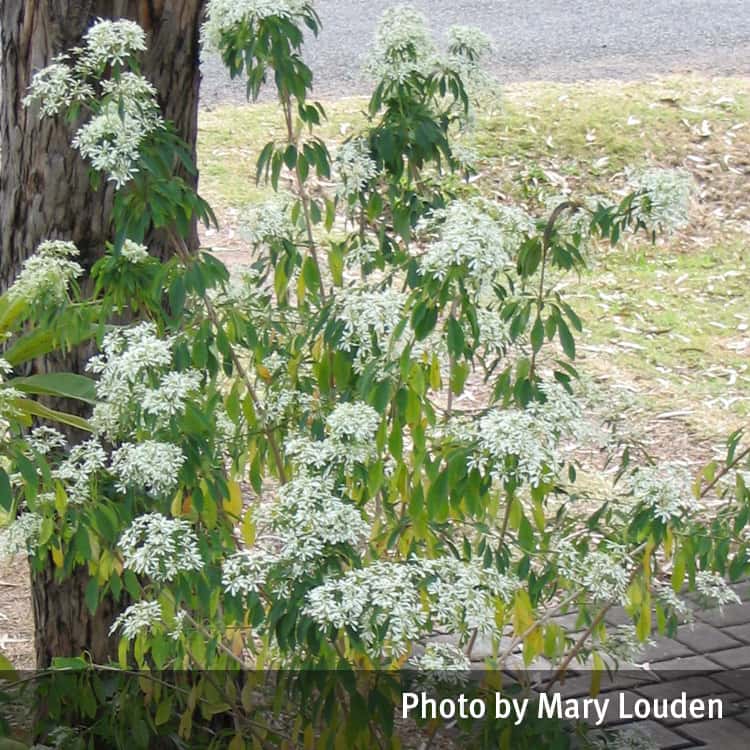Warning
For all eye exposures to sap, rinse the eye with water for 15 minutes and then seek urgent medical assistance.
Description
Small shrub to 3m grown as a garden ornamental.
The flowers are small, grouped together at the ends of branches and surrounded by white leaf-like bracts.
The leaves are light green, lance-shaped, usually opposite or in whorls of three or more, and measuring 2.5 to 8cm in length.
Toxicity
Symptoms
This family of plants is known for their irritant sap, which can potentially cause skin blisters and rashes. If the sap or any part of the plant is ingested, symptoms may include vomiting and diarrhoea, a burning sensation in the mouth and throat.
Images

Details
Common name: Snowflake
Botanical name: Euphorbia leucocephala
Other common names: Snows of Kilimanjaro, Pascuita
Family: Euphorbiaceae
General description: Small shrub to 3m grown as a garden ornamental.
Flowers: The flowers are small, grouped together at the ends of branches and surrounded by white leaf-like bracts.
Leaves: The leaves are light green, lance-shaped, usually opposite or in whorls of three or more, and measuring 2.5 to 8cm in length.
Other: The sap is clear, copious and an irritant.